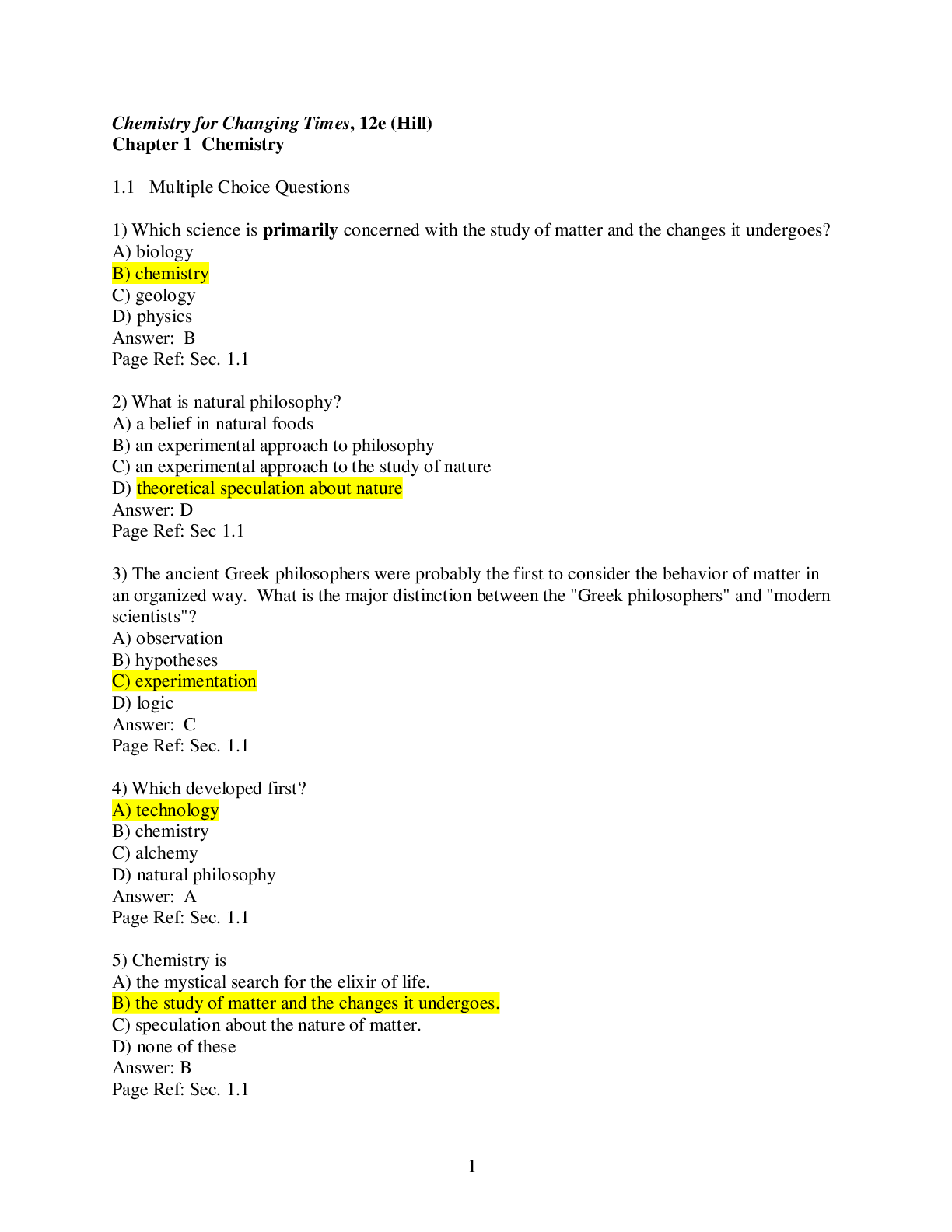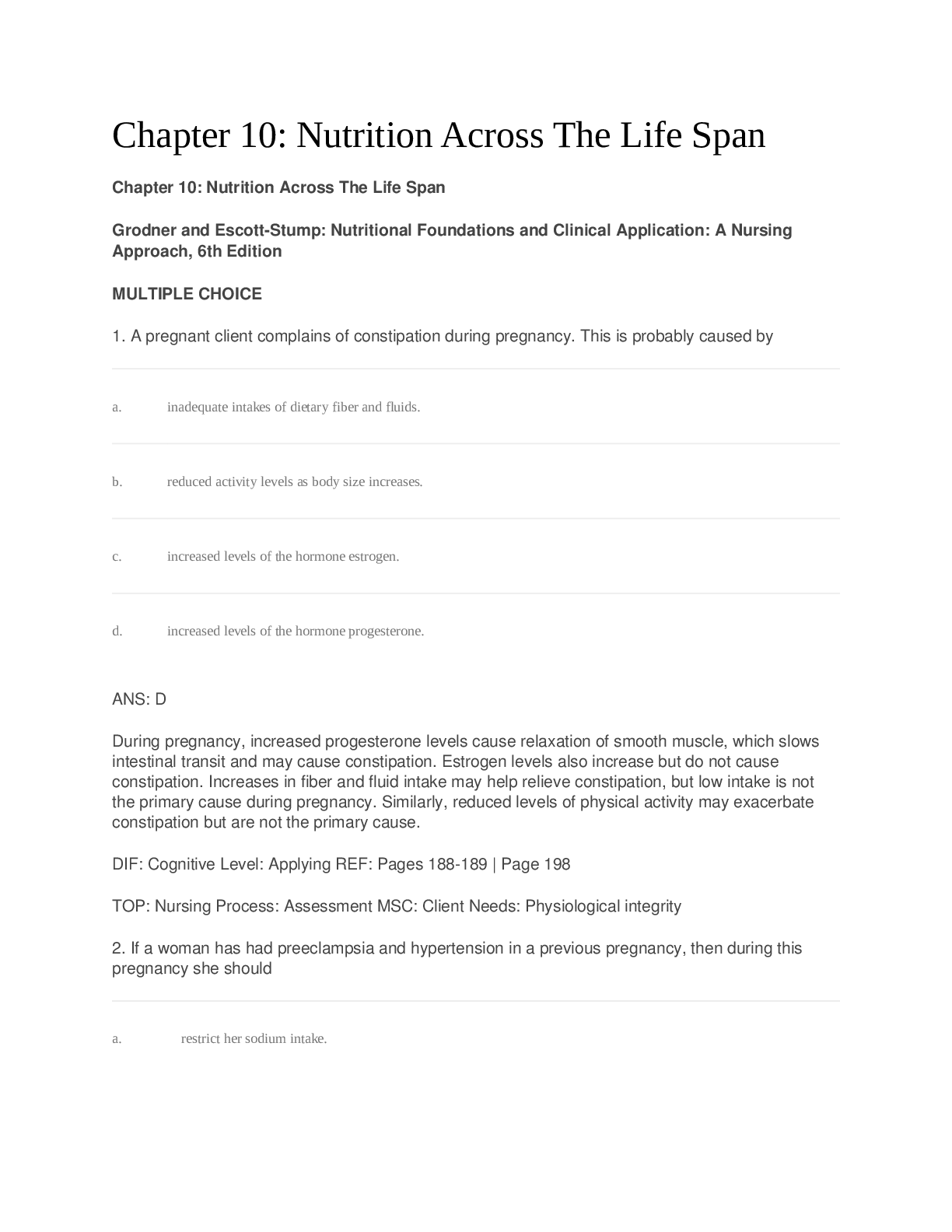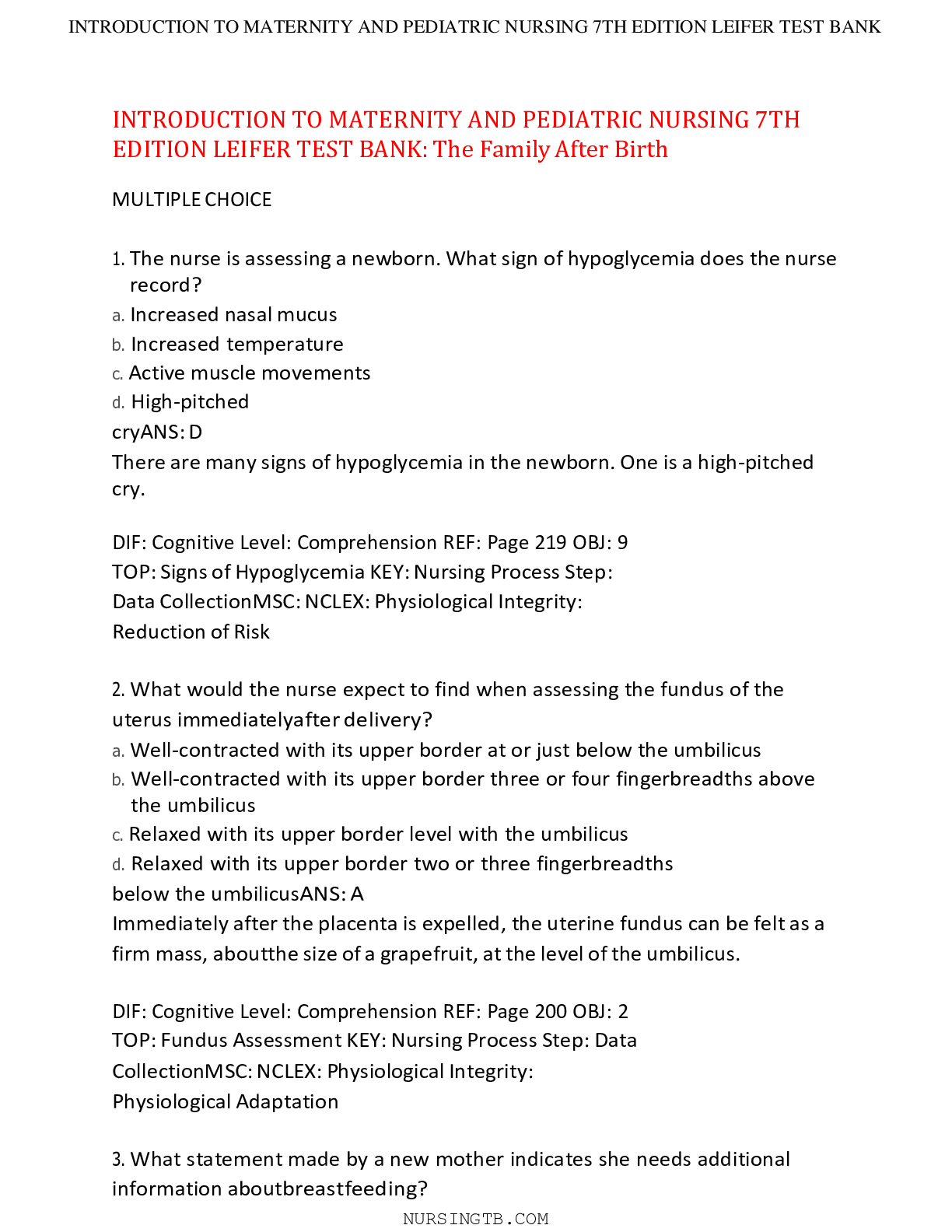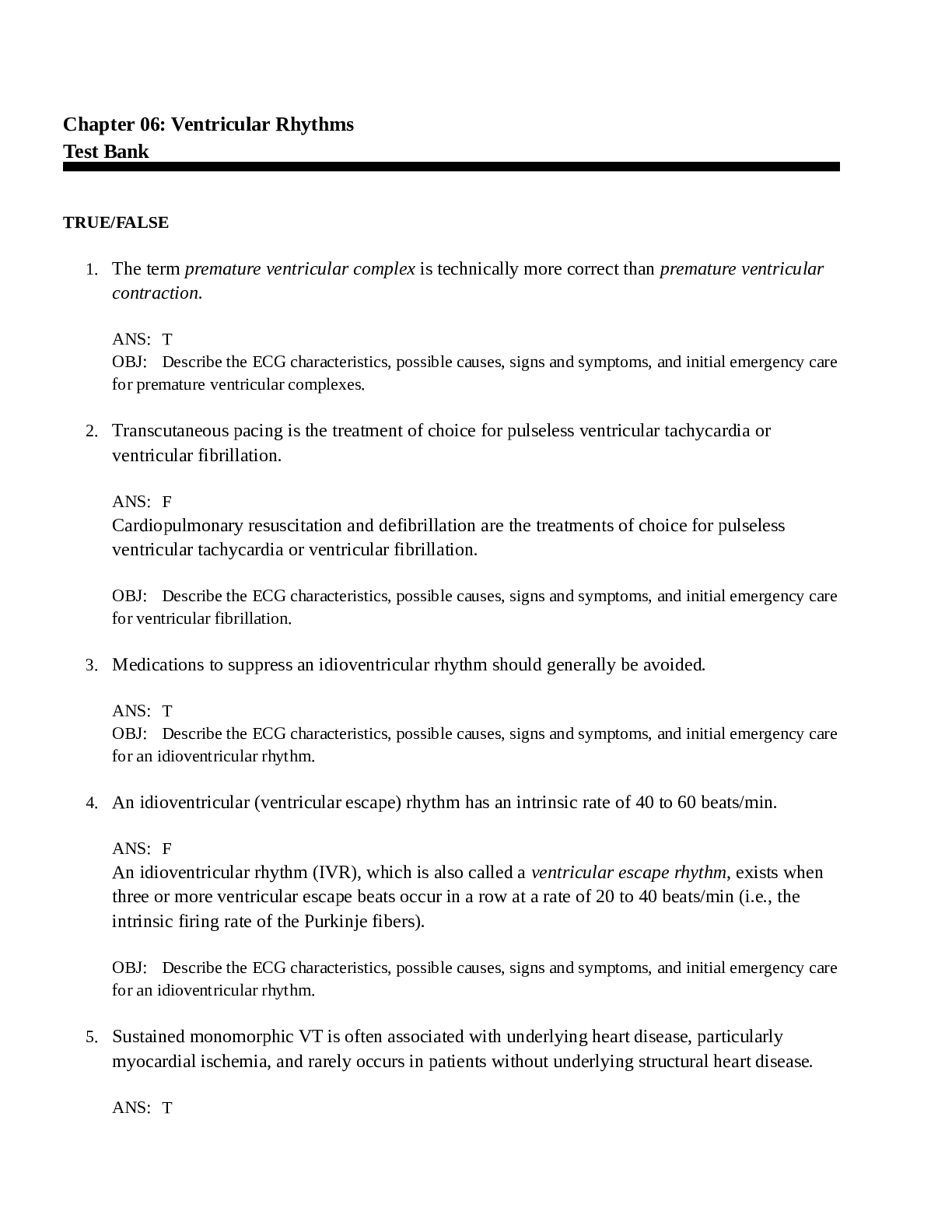*NURSING > EXAM > TEST BANK FOR ECGS MADE EASY 6TH EDITION BY BARBARA Chapter 01: Anatomy and Physiology (All)
TEST BANK FOR ECGS MADE EASY 6TH EDITION BY BARBARA Chapter 01: Anatomy and Physiology
Document Content and Description Below
Chapter 01: Anatomy and Physiology Test Bank TRUE/FALSE 1. Stimulation of beta-adrenergic receptor sites will result in peripheral vasoconstriction. ANS: F Beta receptor sites are divided into beta1 a... nd beta2. Beta1 receptors are found in the heart and kidneys. Stimulation of beta1 receptor sites in the heart results in increased heart rate, contractility, and ultimately irritability of cardiac cells. Stimulation of beta1 receptor sites in the kidneys results in the release of renin into the blood. Renin promotes the production of angiotensin, a powerful vasoconstrictor. Beta2 receptor sites are found in the arterioles of the heart, lungs, and skeletal muscle. Stimulation results in dilation. Stimulation of beta2 receptor sites in the smooth muscle of the bronchi results in dilation. OBJ: Compare and contrast the effects of sympathetic and parasympathetic stimulation of the heart. 2. Blood pressure is the result of cardiac output and peripheral vascular resistance. ANS: T Blood pressure is equal to cardiac output multiplied by peripheral vascular resistance. Blood pressure is the force exerted by the circulating blood volume on the walls of the arteries. Peripheral vascular resistance is the resistance to the flow of blood determined by blood vessel diameter and the tone of the vascular musculature. OBJ: Identify and explain the components of blood pressure and cardiac output. MULTIPLE CHOICE 1. The apex of the heart is formed by the _____. a. tip of the left ventricle b. tip of the right atrium c. right atrium and right ventricle d. left atrium and left ventricle ANS: A The heart’s apex, or lower portion, is formed by the tip of the left ventricle. The apex lies just above the diaphragm, between the fifth and sixth ribs, in the midclavicular line. OBJ: Identify the surfaces of the heart. 2. The left atrium receives blood from the _____. a. pulmonary veins b. aorta c. pulmonary arteries d. inferior vena cava ANS: A The left atrium receives freshly oxygenated blood from the lungs via the right and left pulmonary veins. OBJ: Identify and describe the chambers of the heart and the vessels that enter or leave each. 3. The anterior surface of the heart consists primarily of the _____. a. left atrium b. right atrium c. left ventricle d. right ventricle ANS: D The front (anterior) surface of the heart lies behind the sternum and costal cartilages. It is formed by portions of the right atrium and the left and right ventricles. However, because the heart is tilted slightly toward the left in the chest, the right ventricle is the area of the heart that lies most directly behind the sternum. OBJ: Identify the surfaces of the heart. 4. Blood pressure is determined by _____ multiplied by _____. a. stroke volume; heart rate b. heart rate; cardiac output c. cardiac output; peripheral vascular resistance d. stroke volume; peripheral vascular resistance ANS: C Blood pressure is equal to cardiac output multiplied by peripheral vascular resistance. OBJ: Identify and explain the components of blood pressure and cardiac output. 5. The right atrium receives venous blood from the head, neck, and thorax via the _____, from the remainder of the body via the _____, and from the heart via the _____. a. coronary sinus; superior vena cava; inferior vena cava b. superior vena cava; coronary sinus; inferior vena cava c. inferior vena cava; superior vena cava; coronary sinus d. superior vena cava; inferior vena cava; coronary sinus [Show More]
Last updated: 1 year ago
Preview 1 out of 13 pages
Instant download

Buy this document to get the full access instantly
Instant Download Access after purchase
Add to cartInstant download
Reviews( 0 )
Document information
Connected school, study & course
About the document
Uploaded On
Jul 23, 2021
Number of pages
13
Written in
Additional information
This document has been written for:
Uploaded
Jul 23, 2021
Downloads
0
Views
60







.png)













